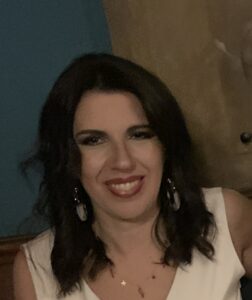Content
A person may take opioids more frequently or at higher doses to restore the euphoria or, as the condition progresses, to avoid withdrawal symptoms. Though opioids can be prescribed by a doctor to treat pain, use of legally prescribed or illegal opioid medications may lead to an opioid use disorder. From 1999 to 2020, more than 800,000 Americans died from drug overdoses. Increasing rates of drug addiction have contributed to recent decreases in U.S. life expectancy. An opioid overdose happens when the body cannot handle the amount of opioids that a person takes or if they take a dangerous combination of opioids and other substances like alcohol, other medications, or drugs.
These studies, however, revealed no significant differences in opioid use. Treatment described in the next section (Everly et al., 2011; DeFulio et al., 2012). This is an open-access article distributed under the terms of the Creative Commons Attribution-Non Commercial-No Derivatives License 4.0, where it is permissible to download and share the work provided it is properly cited. Naltrexone and buprenorphine can be prescribed by a physician for use by the patient in a non-office setting.
What Are Opioids?
In addition to medications, these programs also offer numerous services and supports, including but not limited to counseling, educational services, medical screening and care, mental health care, and referrals to social services. In most cases, patients receiving services at an OTP are provided with long-term treatment, similar to management of chronic physical ailments. Pregnant women and people who use intravenous drugs are given priority admission to OASAS-certified treatment programs including OTPs. Denver Health’s expert care teams include physicians, psychiatrists, nurses, clinical psychologists, social workers, professional counselors and case managers. Outpatient Behavioral Health Services offers professional, multi-disciplinary substance and mental health treatment through a number of specialized clinical care teams. Substance treatment includes Medication Assisted Treatment (methadone and buprenorphine ) through a licensed narcotic treatment program plus buprenorphine and depo-naltrexone throughoffice-based opioid treatment.
- A randomized, placebo-controlled trial suggested that an injectable, sustained-release form of naltrexone increased retention of patients in treatment for opioid abuse.
- In 2015, Governor Wolf expanded Medicaid, which has allowed more than 125,000 Pennsylvanians with an opioid use disorder to access treatment.
- However, health care providers should not hesitate to prescribe opioids based on a concern for neonatal abstinence syndrome alone.
- Outpatient Behavioral Health Services offers professional, multi-disciplinary substance and mental health treatment through a number of specialized clinical care teams.
- The Wolf administration has made the fight against opioid use disorder a top priority.
- They restore balance to the parts of the brain affected by addiction.
Anesthesiologists are the most highly skilled medical experts in anesthesia care, pain management, and critical care medicine, with the education and training that can mean the difference between life and death. Look for pharmacies and health care clinics that provide drop-off boxes or sell specially designed drug disposal envelopes that you can seal and mail to an approved facility. If you or a loved one is considering taking opioids to manage pain, it is vital to talk to an anesthesiologist or other pain medicine specialist about using them safely and exploring alternative options if needed. Learn how to work with your anesthesiologist or another physician to use opioids more wisely and safely and explore what pain management alternatives might work for you.
Virtual Urgent Care Now Available for Denver Health MyChart Users
In addition, individuals may have other health related conditions such a hepatitis, HIV and AIDS. Naloxone – used to prevent opioid overdose, naloxone reverses the toxic effects of the overdose. Disulfiram – treats chronic alcoholism and is most effective in people who have already stopped drinking alcohol or are in the initial stage of abstinence.

Opiate withdrawal is generally considered less likely to produce severe morbidity or mortality compared with barbiturates and benzodiazepines. Safe withdrawal from opioids is termed detoxification and can be performed as outpatient or inpatient therapy, depending upon presence of comorbid medical and psychiatric problems, availability of social support, and polydrug abuse. In June 2014, the FDA approved a buccal form of buprenorphine/naloxone for opioid dependence maintenance therapy. Approval was based on a phase III, 12-week, clinical trial of 249 patients that were converted to the buccal film from the sublingual tablet . The film was shown to be safe and effective with less constipation than with Suboxone. Suboxone sublingual tablets have been replaced on the market with a Suboxone sublingual film.
A roadblock to life-saving addiction treatment is gone. Now what?
As more patients with opioid addiction receive OAT, physicians will encounter OAT patients with acute pain syndromes. Buprenorphine is a mu-opioid partial agonist that, like methadone, suppresses withdrawal and cravings. However, opioid addiction treatment the property of partial agonism confers a “ceiling effect,” at which higher doses of buprenorphine cause no additional effects. This ceiling effect affords a wider margin of safety than methadone, which can be lethal in overdose.
What medication is best for withdrawal?
Buprenorphine is the best opioid medication for management of moderate to severe opioid withdrawal. It alleviates withdrawal symptoms and reduces cravings.
In New York State, OASAS and the Department of Health have partnered to offer a waiver for hospitals to provide detoxification services without an OASAS-issued certification. If you or a loved one are denied access to medication-assisted treatment in a hospital emergency department, present them with the letter below to Hospital CEOs from OASAS and the Office of Primary Care and Health Systems Management. Medications to treat opioid use disorder are highly effective and proven to save lives, and are therefore the recommended standard of care for opioid use disorder.
Questions about the Oregon Health Plan?
We collaborate to design integrated programming that reflects the chronic and relapsing nature of addiction. Sessions typically focused on substance use education, relapse prevention, medication education, HIV prevention, health promotion, and women’s support groups; 12-step attendance was encouraged. Extended-release injectable naltrexone is another medication tool that treats opioid addiction. Injectable Naltrexone can be provided by any healthcare provider who is licensed to prescribe medications. The medication can also be provided within anarcotic treatment program.


